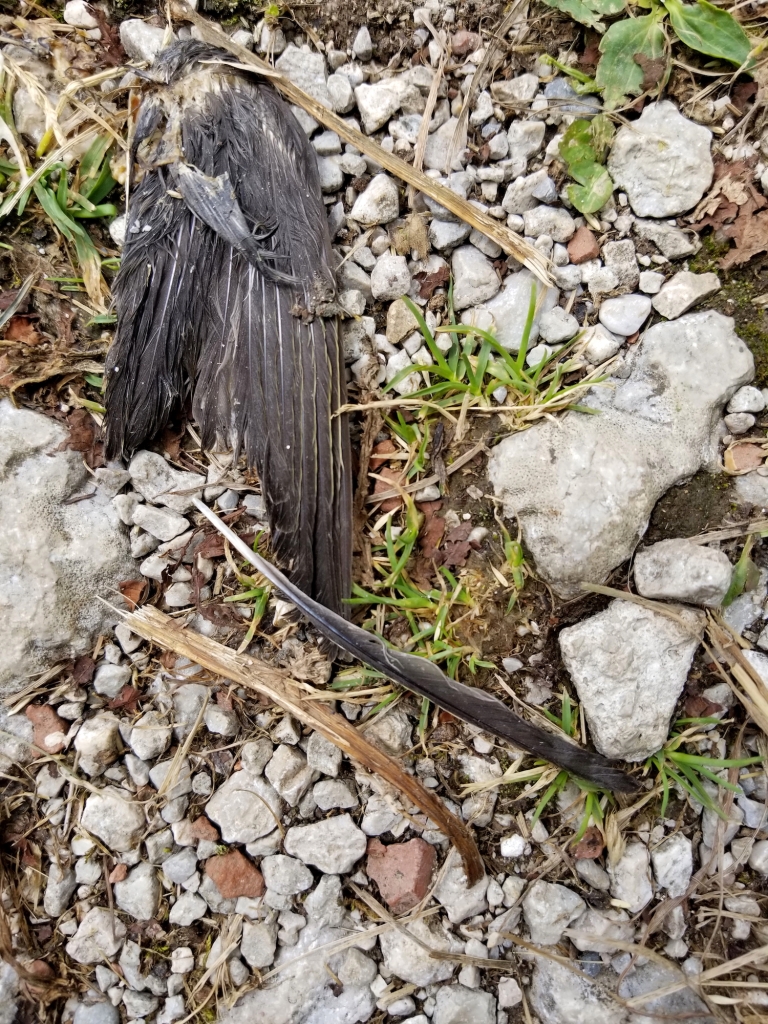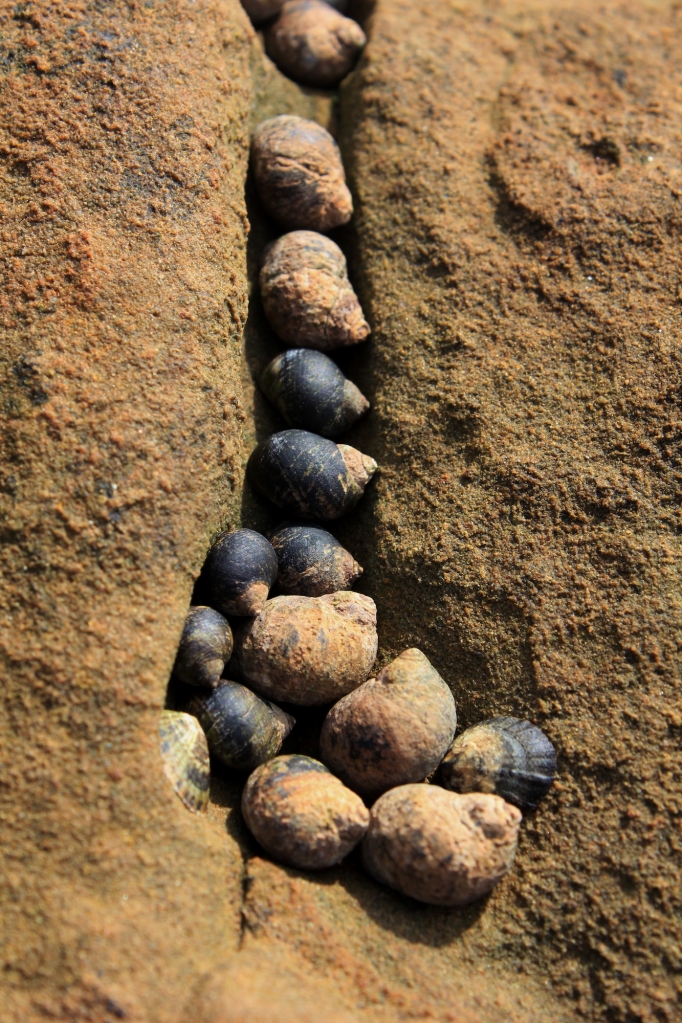
We are not pieces,
rubble, cast asides. We are
part of everything.
Please forgive the morbid content; this drew me in tonight. Thank you for joining the September Dailies! I appreciate your follows, likes and the occasional comment here and there. ❤

We are not pieces,
rubble, cast asides. We are
part of everything.
Please forgive the morbid content; this drew me in tonight. Thank you for joining the September Dailies! I appreciate your follows, likes and the occasional comment here and there. ❤

Grant me wisdom. Peace.
Grant me health and luck for this,
my most precious thing.
I’m not even going to attempt to summarize the history, only to say Wiki and Atlas Obscura have some really cool details on this artifact from the 1400s.
Briefly, R– and I arrived in Vienna for the last day of our Slovenia vacation, but unfortunately neither of us had bothered to look un information on the city and devise a plan for how we wanted to experience the city. A quick google search brought up this little gem of an oddity. The Nail Tree. Apparently, it was a thing in the middle ages to drive a nail into a tree for luck, for protection, or for thanks for some miracle.
I had to see it. During the last six hundred years, countless people have stood before this spruce tree and performed the ritual act of driving a nail into its trunk. All these acts of wanting and needing and thanking.

I’ll crush you, eat you
alive, snuff you out. My walls
grow strong with your bones.
Conquest and supplanting indigenous cultures. It’s an ugly business, which often time results in the winner trying to erase or subvert what was there before. There are innumerable examples of these practices around the world. Take the Hagia Sophia, for example, whose walls are kept whole, but its function changes.
In Italy, I don’t remember where, I saw the remnants of a Temple of Minerva, which had been dismantled and mostly reconstituted as a Christian church, with the exception of piles of marble blocks.
In the jungles of Guatemala, various warring factions constantly vied for power. When the Mayan cities were taken over, the conquers would build new structures right over the old, partly out of a belief that they could absorb the power and the wealth of the vanquished by doing so.
The photo is of a brick wall in the surrounds of Castle Ptuj in the northeastern part of Slovenia near the Austrian border. The castle itself has changed hands numerous times in its 900 years of existence, but long before that, it was a Roman military fortress. Destroyed by the Huns in 450, it was later settled by the Celts. And then ruled by the Slavs, and then the Austro-Hungarian empire, then Yugoslovia and the Nazis and then a solvent Slovene identity, otherwise known as independence. Layers of influence in the mud of history.
This gorgeous wall features remnants from that Roman settlement, as well as a lovely carving of a serpent, a dragon I’d like to think, from one of the earlier iterations of the castle. In this context, the past and its various peoples seem to be celebrated, rather than snuffed out.
ps, very very very brief history lesson provided by Wikipedia.

The earth swells, wavelike,
frozen at its peak, never
breaking over scars.
R– and I met a lovely woman on the last night of our trek through the Julian Alps. Sitting on the deck of the hut, with kittens roaming around for attention and white stone rock faces rising in the distance, we chatted as the sun shifted out of view, and our cans of Union beer ran dry. We talked politics and gender identity. We talked home and geography. We talked history. In particular, the history of this place.
The Slovenian native shared that the Julian Alps were part of the front during World War I. Supply lines ran through the mountains, and eventually fighting took place there, too. According to her, many of the structures, as well as the trails, were built in support this violent effort.
It’s hard to imagine such ugliness and hardness in such a place of beauty, even though I know people are confronted with this contrast all over the world daily.
The knowledge added so much depth and texture to our trip. This wasn’t just nature; this was history. War machines had quite possibly carved or rolled over some of the very trails we tread. An overlapping of memories, those made and those in the making, within that space.
I don’t know if either of the photos features structures built during the WWI effort, but I imagine they looked something like this.

Back in July, R– and I had our first big adventure together. Even though she’s my sister-friend and we can now count how long we’ve known each other in decades, we’ve never gone on an extended vacation together. Until now. We started in Venice, traipsed all through Slovenia, and ended in Vienna.
Part of our epic trip took us trekking through the Julian Alps. These 3 days ended up being the cornerstone of our trip. We started in Stara Fužina, from where we gained about three thousand feet of elevation during the first third of our day. Reaching the first hut just after midday, we ate and rested and got ready for the next day on foot.
I will preface this by saying we had no less than two forms of navigation. A map and gps (via phone) with downloaded topo maps. AND there were these awesome signs telling you which way was what.

Not so obvious, as it turns out.
Day 2 was supposed to be out easy day with variably elevation gain and loss throughout the day, and maybe about 800 feet of cumulative gain. Yeah. No.
We logged almost the same amount of elevation gain as day 1, and got thoroughly lost. But thankfully there was a really nice cheese lady with a barking dog and cows to show us the way. This is the entrance to the magical cheese hut.

We ended up buying a hunk of cheese here, which we would end up carting around all over Slovenia and Austria. It even made its way to the States where we ate it with pleasure with our friends and family.
Even though the trail kicked our butts, and we had no idea where we were, we loved it here, and wished we had overnighted here instead. It was small and simple and beautiful. The meadow cleaved off into an amazing view of granite slopes stubbled with pines. Peace. Stillness. The environ was in balance with itself, a zen state. And there were cow friends.

But we had more ground to cover. Convinced we’re going back one day, we dutifully recorded the name of the place, and got directions from the cheese lady.
“Is it hard?” we asked.
“No. Very easy. And beautiful. You will love it.”

While she was wrong on one point, she was 100% correct on the other. This trail was amazing. I was already in love with where getting lost had led us to, but once we stumbled upon some of the most pristine landscape I’ve ever been in, I wanted to get lost over and over again.

Wild flowers, bumble bees, alpine and subalpine vegetation everywhere. Not one speck of trash. No cigarette butts. No people sounds. Just this view. Just this place and its native inhabitants.

I’ve made some excellent wrong turns in my life. This particular day in Slovenia, at that cheese hut, and on that seldom-trafficked trail, stands among the most memorable.
Sometimes the wrong turn turns out exactly right.

take this spark, sink
it in your soft tissue like
a shrapnel blossom.
The Prometheus sculpture resides near the Butcher’s Bridge in Ljubjana, Slovenia. Made by renowned sculptor, Jakov Brdar, this piece is one of three installed around the bridge. I love the aesthetic of his work. Monstrous, half-formed, but still infused with elegance. The line of the body, the curve of the ribs. It feels made and unmade in the same breath.
I was listening to a podcast, called the The Health Code, which is put on by an Aussie couple, and one of the things Sezzy (the woman) said that really stuck out to me was “Stop being so precious.” This immediately clicked with me and made instant sense in the context of my own life.
What does “being precious” mean in the first place? I can’t be 100% sure how they meant it, but I take it to mean letting go of perfection. Letting go of the expectations you build around a task or activity or interaction. It also has connotations that we need to stop whining when something is hard, and that we need to lean in when we might think we’re too delicate, and really just want to run away.
A— calls this “steering into the storm”.
Honestly, I love this notion. We can put up so many barriers to pursuing things we claim are important to us. Like only writing when we’re inspired, or only writing when we can immediately drop into flow state and stay there for hours. Or only doing an activity we’re good at. Or shying away from the next hike because the last one was 20% traumatic, 15% exhausting, and 65% amazing. Or not going for that run because we only want to go when we can crush it and put up our best pace yet.
These are all examples of being precious. And being precious gets in the way of making progress.
I feel the greatest growth not when everything is serendipitous and I have blue birds flitting about and resting on my shoulders. My growth happens when I have to fight for it, whatever the it is in that instance. Like getting up at 4:45 A.M. to write for a 5-minute microsprint. Or working out every day. Or doing walk-jog intervals for only 15 minutes with embarrassing performance because, after years of intermittent injuries, my body can’t yet sustain the 6-mile runs I used to pound out with joy.
I have plenty of moments of treating myself like a fragile object. Most of the time I know I can not only do better, but I can do more. The thing I’m kicking myself for right now is not having touched my book project since the 7th of September even though I’m so very very close to getting to the next stage: shopping the material! Why am I being so stupidly precious about it, and extending my timeline by months already?
Enough about me. Let’s talk about you. What do you want to achieve in this life? How are you investing your energy in those most important things? Are you being precious?

Repeated dark thoughts,
little endemic species,
aspire to war.
The text making up this particular haiku are phrases pulled from the following podcasts: Crime Junkie (Murdered: Yingying Zhang), In Defense of Plants (Amber Time Capsule), and Throughline (the Puerto Rico episode). This is loosely based on the idea of the mash-up, where a work is created out of existing text.

We gather wounds, then
small gifts of memories, like
thread, to stitch us closed.

Darkness sits like veils
drawn across the body. Bare.
Waiting. But the light–